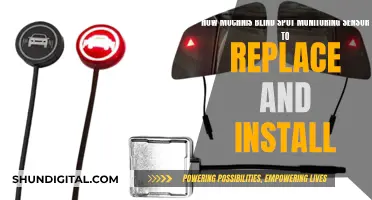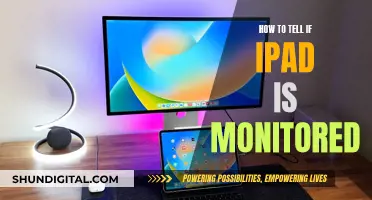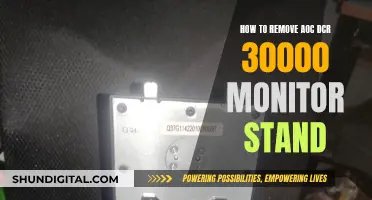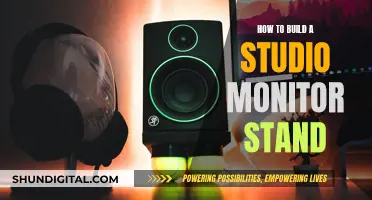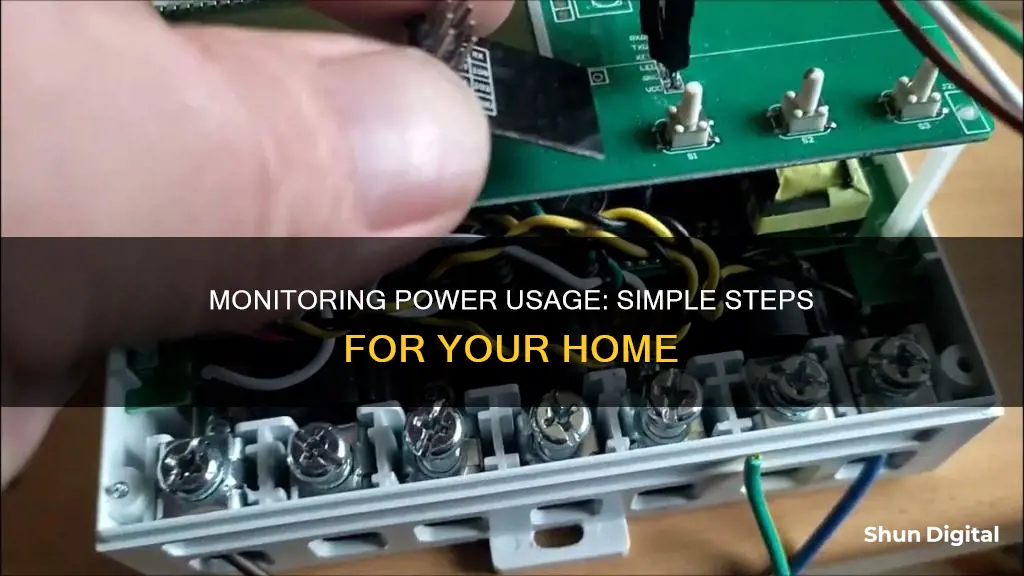
Monitoring power usage at home is essential for those who want to save money, reduce their environmental footprint, or both. Modern electricity monitoring devices provide real-time power consumption statistics for single outlets or entire homes, allowing homeowners to adjust their consumption patterns. There are various methods and tools available to track power usage, from simple calculations to energy monitoring devices and smart home solutions. By understanding your consumption, you can make informed decisions to optimise your energy usage and reduce costs.
| Characteristics | Values |
|---|---|
| Purpose | To save money on utility bills and to live a more sustainable lifestyle |
| Devices | Power meters, energy monitors, sub-meters, smart plugs, smart outlets, smart bulbs, smart speakers, smart hubs, smart homes, smart assistants, smart apps, smart plugs with energy monitors, plug load monitors, electricity usage monitors, smart power strips, smart bulbs, smart LEDs, smart light bulbs, smart phone apps |
| Data | Kilowatt-hours (kWh), watts, volts, amps, watt-hours (Wh), cost |
| Installation | Some devices need to be installed by an electrician, while others can be self-installed |
| Benefits | Energy savings, cost savings, enhanced safety, smartphone integration, remote control, scheduling, fire protection, carbon footprint tracking, appliance-level consumption tracking, daily/weekly/monthly consumption tracking, real-time data, power quality analysis, utility bill predictions, identification of faulty devices, identification of heavy appliances, identification of devices using too much electricity |
| Drawbacks | Some devices may not work with certain appliances, e.g. dryers or hot tubs; some devices may not work with certain power systems, e.g. 220V or 230V |
What You'll Learn

Use an app to monitor electricity usage
Using an app is a great way to monitor your electricity usage and gain insights into your home's energy consumption. There are many apps available that can help you track your power usage, visualise your daily and monthly patterns, and even estimate your monthly bills.
One such app is EnerTalk, which is free and innovative. It allows you to monitor your electricity usage and spending in real-time right from your smartphone. It supports multiple properties and does not require any hardware purchase or installation. You can connect the app with your utility provider account, and it will pull the energy data and display it on the app for your convenience.
Another app, Ohm Assistant, uses AI to provide insights into your electricity usage. It tracks your daily, weekly, and monthly consumption, and it can also give you a breakdown of appliance-level usage. Ohm also provides tips to optimise your consumption and helps you keep track of your carbon footprint.
Other energy monitoring apps include Nest Mobile, mySunPower, Meter Readings, and Energy Tracker. These apps can help you record your consumption of electricity, water, gas, and heat, and provide analysis and evaluation of your usage.
Using an app to monitor your electricity usage can help you identify areas where you can save money and reduce your energy consumption. It can also help you become more conscious of your energy usage and make more informed decisions about your power usage at home.
Monitoring GPU Usage: A Comprehensive Guide to Tracking Performance
You may want to see also

Identify 'vampire energy' devices
Vampire devices are appliances that drain power when left on standby or when they are not in use. According to the NRDC, they account for almost one-quarter of home energy use. Vampire devices can increase your energy bill and carbon dioxide emissions.
- Phone chargers – These continue to draw power even when not actively charging a device. Unplug your charger once your device is charged, and consider sharing a charger with a housemate if you have the same charging port and different schedules.
- Grooming devices – Hairdryers, hair straighteners, and electric razors are often left plugged in but can be unplugged after use, especially if they are not used frequently or for extended periods.
- Kettles – Kettles are one of the biggest energy vampires, costing around £4.79 per day in most households. To reduce energy consumption, only boil as much water as you need or consider making fewer hot drinks.
- Electric heaters – Electric heaters can cost around £4.68 per day to run. If possible, consider heating a single room with a small heater instead of the entire house.
- Tumble dryers – Tumble dryers cost approximately £4.00 per use and are a significant energy drain. Using a clothesline or rack to dry clothes can help reduce energy consumption.
- Washing machines – Washing machines use a substantial amount of electricity, around £4.00 per day. To save energy, only wash full loads and use colder water temperatures, typically 30 degrees Celsius or lower.
- Ovens – Electric ovens can cost around £4.00 per day. Batch cooking and turning off the oven at the plug can help reduce energy usage. Leaving the oven door open when it's off and cooling down can also help warm the kitchen or adjacent rooms.
- Dishwashers – Running a dishwasher costs about £3.00 per day. Reducing the number of loads or washing dishes by hand can help save energy.
- TVs – Televisions often leech power even when turned off with the remote, as the red standby light remains on. Connecting your TV to a power strip and turning off the strip when the TV is not in use can effectively slay this vampire.
- Laptops and chargers – Laptops and their chargers draw power even when the laptop is not plugged in. Remember to unplug both the laptop and the charger from the wall to prevent vampire energy drain.
- Printers – Printers are another common vampire device. Plug your printer into a power strip or unplug it when not in use to prevent unnecessary energy consumption.
By identifying and addressing these vampire devices, you can significantly reduce your energy usage and save money on your electricity bills.
Monitoring Energy Usage: A Guide to Understanding Your Consumption
You may want to see also

Understand your electricity bill
Understanding your electricity bill is an important step in monitoring your power usage at home. Here are some key things to know and look out for when reading your electricity bill:
Understanding the Components of Your Bill
Your electricity bill is typically a combination of two main charges: usage and service. The usage charge is based on the actual amount of electricity you consume during the billing period, usually measured in kilowatt-hours (kWh). This is calculated by multiplying your energy use in kWh by the energy price per kWh. The service charge, on the other hand, is a fixed delivery cost that covers the expenses incurred by your energy provider to run their business. It is typically a daily charge for delivering electricity to your property.
Reading Your Electricity Usage
Electricity usage is often presented in the form of a graph or table on your bill. This visual representation helps you understand your average daily electricity usage and costs over time. Some bills may also include a comparison to your usage during the same period last year, allowing you to track changes in your electricity consumption. For households, electricity retailers are legally required to provide a comparison of your usage to similar-sized households in your area.
Tariffs and Pricing Structures
Tariffs on your bill represent the rate you pay for using electricity at specific times. There are several types of tariffs, including single or flat rates, time-of-use rates (with peak, off-peak, and shoulder periods), and controlled load tariffs for high-power-usage appliances. Understanding these tariffs is crucial in managing your electricity costs.
Additional Information on Your Bill
Your electricity bill also contains important account information, such as your unique account number, service address, and billing period. It may also include details about your plan, such as applicable benefits and features. Additionally, you will find information about government concessions or rebates, adjustments, and other fees or charges. Keep an eye out for any estimated bills, which are generated when your energy provider could not access your meter for a reading.
Tools for Further Analysis
While your electricity bill provides valuable information, you can also utilise tools like the Ohm Assistant App or energy monitoring devices to gain deeper insights into your power usage. These tools can help you track daily, weekly, and monthly consumption, identify appliance-level usage, and even predict utility bill amounts.
Monitoring PSU Usage: A Comprehensive Guide to Tracking Power Supply Performance
You may want to see also

Install an electricity usage monitor
To install an electricity usage monitor, you will first need to decide which type of monitor you want. There are several types of monitors available, including smart meters, traditional meters, plug-in energy monitors, wireless energy monitors, and online energy monitors. Each type of monitor offers different levels of insight and convenience, so be sure to choose the one that best suits your needs.
Once you have chosen the type of monitor you want, you can proceed with the installation process. For smart meters, such as plug-in energy monitors, the setup is usually straightforward and can be done in minutes without professional assistance. However, for traditional meters and other types of monitors that require wiring, it is recommended to hire a licensed electrician to ensure a safe and proper installation.
Wireless energy monitors, for example, are typically wall-mounted devices that rely on Wi-Fi to provide real-time power usage data for your entire house. They are similar to iPads or tablets and often come with features like kWh, costs, and CO2 emissions tracking. For this type of monitor, a licensed professional will need to attach energy sensors to your meter.
Online energy monitors are another option and are considered the most accurate, providing deep insights into your electricity usage. These monitors are web-based tools that can be accessed through an internet connection on your desktop, tablet, or mobile app. If your home is equipped with a smart meter, you may already have access to online energy monitoring provided by your power company. Otherwise, you will need to add an attachment to your internet router and hire an electrician to install an energy sensor on your meter.
Whole-home energy monitors are another option and can be extremely useful in identifying ways to save on your power bills. These monitors are small devices that are installed in your circuit breaker panel and provide load disaggregation, helping you trace which devices in your home are drawing power and how much they are drawing. While you can install these monitors yourself, it is highly recommended to hire a licensed electrician as it involves working with high-amperage electricity, which can be dangerous.
By following these steps and choosing the right type of electricity usage monitor for your needs, you can effectively track and manage your home's energy consumption.
Monitoring KWH Usage: A Simple Guide to Energy Tracking
You may want to see also

Compare energy usage with neighbours
Comparing your energy usage with that of your neighbours can be a great way to get an idea of how much power you are consuming and help you identify areas where you can cut back and save money on your energy bills.
There are several ways to compare your energy usage with your neighbours. Firstly, you can use an energy monitoring service or device such as myenergy.com (now owned by Nest) or Unitil's Home Energy Reports. These services allow you to compare your energy usage with that of your neighbours, either in your local area or across the country. They can provide you with information about your home's energy use, including a comparison of your monthly and annual usage, and offer personalised tips to help you save money and energy.
Another way to compare energy usage is by using a smart home device or app such as the Ohm Assistant App. This app can track your daily, weekly, and monthly energy consumption and provide insights into appliance-level usage. It can also help you track your carbon footprint and predict your utility bills.
Additionally, you can use power meters and energy monitors to measure the energy usage of specific appliances or your entire property. These devices can be purchased and installed yourself, or you can hire an electrician to install them. They will provide you with data on your energy consumption, which you can then compare with your neighbours.
By comparing your energy usage with your neighbours, you can identify areas where you may be using more energy than necessary and make informed decisions about how to reduce your consumption and lower your energy bills.
Monitoring Electricity Usage: A Guide to Tracking Your Power Consumption
You may want to see also
Frequently asked questions
Looking at your electricity bill is the simplest way to gain insight into the energy usage of your whole home.
You can monitor individual outlets to identify which appliances are using the most energy. You can do this using smart plugs or energy-monitoring outlets that measure the power consumption of each device plugged into them.
A smart plug allows you to monitor the energy flowing through a single outlet, giving you a more detailed look at which appliances consume the most electricity.
Using a smart plug can help you diagnose faulty devices or make positive changes to your energy use. It also allows you to control appliances remotely, adding an extra layer of safety to your home.
Yes, there are apps such as the Ohm Assistant App and the EcoFlow app that can help you track your daily, weekly, and monthly power consumption.


